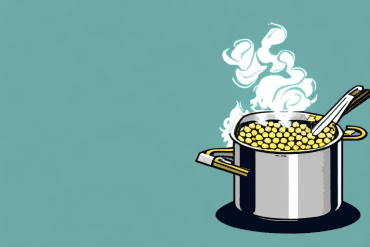Cooking dry peas is a simple and straightforward process, but it is important to have the correct ingredients and supplies in order to make the perfect dish. This guide will provide a step-by-step instructions for cooking dry peas, as well as helpful tips and advice to ensure your peas are perfectly cooked every single time.
What You’ll Need for Cooking Dry Peas
In order to cook dry peas, you will need the following ingredients and supplies:
- Dry peas
- Water
- Salt
- A large pot
- A slotted spoon
Once you have all of the necessary ingredients and supplies, you can begin cooking your dry peas. Start by adding the dry peas to the pot and covering them with water. Bring the water to a boil, then reduce the heat and let the peas simmer for about an hour. Once the peas are tender, add salt to taste and serve. Enjoy!
Step One: Soaking Your Peas
The first step in cooking dry peas is to allow the peas to soak in room temperature water overnight. This will allow them to absorb more water and become much easier (and faster) to cook. Simply add the dry peas to a large bowl or pot, fill it with enough cold water to completely cover the peas, and add a pinch of salt for extra flavor. Let the peas soak for 8-12 hours.
Step Two: Choosing a Cooking Method
Your next step will be to decide upon a cooking method. There are two popular methods for cooking dry peas: boiling or simmering. Boiling is faster and simpler, but simmering will result in softer, fluffier peas. Ultimately, your choice of method will depend on your preferred texture, as well as the amount of time you have available.
Step Three: Preparing the Peas for Cooking
Once you have chosen your cooking method, you will need to prepare the peas for cooking. For boiling, drain the soaked peas and rinse them with cold water before adding to a large pot. For simmering, you can either leave the peas in the soaking liquid or drain and rinse them beforehand. Either way, cover the peas with fresh cold water in the pot.
Step Four: Cooking the Peas
Now it’s time to start cooking! For boiling, simply bring the water to a rapid boil, reduce to a simmer and cook for 25-30 minutes or until the peas are tender. For simmering, place the pot over medium-high heat, bring to a brief boil and then reduce the heat to low. Simmer for 45-60 minutes or until the desired texture is achieved.
Step Five: Flavoring the Peas
Once the peas are cooked through, you can add any desired seasonings to enhance the flavor. Common options include butter, olive oil, garlic, herbs and pepper. Add these ingredients at the end and stir until everything is evenly combined and heated through.
Step Six: Serving Your Cooked Peas
Your cooked peas are now ready to be served! Depending on your preferences, you can either enjoy the peas immediately or store them in an airtight container in the refrigerator for up to four days. You can also freeze them for up to six months for future use.
Tips for Making Perfectly Cooked Dry Peas
Cooking perfect dry peas takes some practice, but these tips can help you get the best results:
- Soak the dry peas overnight to ensure they are properly cooked through.
- Always use fresh cold water when cooking and never re-use the soaking water.
- Monitor your peas while they are cooking and adjust the heat as necessary.
- Always add seasonings at the end of cooking to ensure they do not burn or become bitter.
- Make sure you drain any excess water before serving.
Common Mistakes to Avoid When Cooking Dry Peas
Cooking dry peas can be intimidating at first, but avoiding some of these common mistakes can help ensure your dish is perfect every time:
- Using old or expired dry peas – make sure you check use-by dates before buying.
- Oversalting your dish – always taste as you go to make sure you don’t add too much salt.
- Adding too much water when cooking – this will result in mushy, overcooked peas.
- Underestimating the cooking time – some varieties of dry peas may take longer to cook than others.
- Forgetting to drain the cooked peas – draining any excess water is essential for a successful dish.
Cooking dry peas is a simple process that just requires a few ingredients, supplies and a bit of patience. With this step-by-step guide and its helpful tips and advice, you can confidently create perfectly cooked dried peas every single time.


0 responses to “How to Cook Dry Peas: A Step-by-Step Guide”